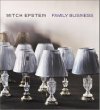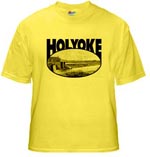by Laurel | March 27th, 2014
31 March 1901
Her Work and Her Social Life
A century ago New England, strange as it may seem now, was inhabited by New Englanders– those odd specimens of middle class English stock grotesquely warped by the wilderness into what we call the Yankee. We heard yet no brogue but our own. The little hills and valleys of Massachusetts were filled with a serous population, anxiously teasing a scanty sustenance from a reluctant soil — the man at work in the field and the woman in feeding and clothing him and raising his children according as it had been ordained from the Garden of Eden until that time. Then suddenly the cotton mill came into New England, to disarrange the order established and laid out from the beginning — to emancipate woman from her natural propension, to raise up cities in the waste places, to build railroads, to drain country towns, to bring in a babel of brogue unequaled in any one place since the Old testament. There was a cotton mill established in Beverly in 1787, and many others followed in the next two decades — undeveloped affairs, doing only a part of the work. There was a cotton yarn mill in Monson, built in 1811. But in the early 1800’s the development was well under way. There were mills, among other places, in Monson, Ware, Indian Orchard and Ludlow, and the big Chicopee company’s mill had started at Chicopee Falls.
While the female bards of New England unite in their floral hymns of praise tot eh pioneers in women’s education, it is worth while for a mere hard-headed man to tell the simple facts about the New England cotton mill the first great employer of women’s labor. When it came it found the country places full of dependent women who never saw a dollar from one year’s end to another — not if Father knew it, and Father generally did, young women coming ut of sturdy girlhood, older women, widows and old maids, dragging out a weary and colorless life under the simple Puritan bounty of some relative. These women heard of the cotton mill, and straight away hurried from the stern farmhouse to the crowded brick tenements of the mills, thanking heaven that at last they could be independent. They fed themselves and clothed themselves, and saved money — for their own education, for the payment of family debts and for their dowries to their husbands, or for a possible husbandless old age. Some of the best of the literary women of the generation that is past now, and some of its best teachers, and many of the prosperous wives of after years educated themselves by what they earned in the mills. There has grown up in recent years a sort of caste feeling against the name of mill-girl. But anyone who thinks that such a thing existed in the early days fails entirely to understand the spirit of that time. Those girls had seen their mothers spinning, and perhaps weaving, in their own homes; it was only natural that they should find employment in the woman’s work of the new mills. And the man who happens to have had a grandmother, who had the spirit and industry to work in a New England cotton mill, should thank God for it, and hope that his daughter may inherit something of her enterprise.
These old time factory girls found their time well occupied. Six months in the year, from September 20 through March, they started to their work in the dark at 5 o’clock, dressing their hair beside their work in the mill. At 6:30 they were given half an hour for breakfast; then they worked again to noon, and then after the half or three-quarter hour’s nooning, on again till 7:30 o’clock. In the summer the program was much the same, except that they did not go to work until after breakfast time. These girls were mostly farmers’ daughters — in the Chicopee mills they came from Granby and West Springfield and Belchertown, and many of them from the little while houses on the Springfield hill, where the workmen of the armory lived. In age they ranged from eight years, when the children entered to work as doffers, to middle life and past. The machinery was not perfect then as now, of course, and was not run so rapidly . A woman was required to tend two looms she sometimes ran three and four. Now the weavers have four and five and even eight looms. In the “dressing” room, Miss Lois Reed, the veteran American mill girl now pensioned by the Chicopee company, remembers that it took 60 frames in the old days to do what seven are required to do now. The improvement in machinery has meant some gain in case of operation, too, but on the whole the work is much harder now; which is shown most clearly by the stories of the old mill operatives themselves. In the early times mill girls, contrary to rules, to be sure, but none the less generally smuggled books and knitting and sewing into their workrooms and were constantly occupied with it, while waiting for their machines. There is very little reading in the weave-rooms of the Chicopee and Dwight companies at the time; the literary operatives indulge in their literature outside the mill gates. The mills were made attractive then with flowers in the windows, they were heated in winter with big steam pipes, and were less stuffed than now with machinery and operatives.
Adapted from The Springfield Republican.









